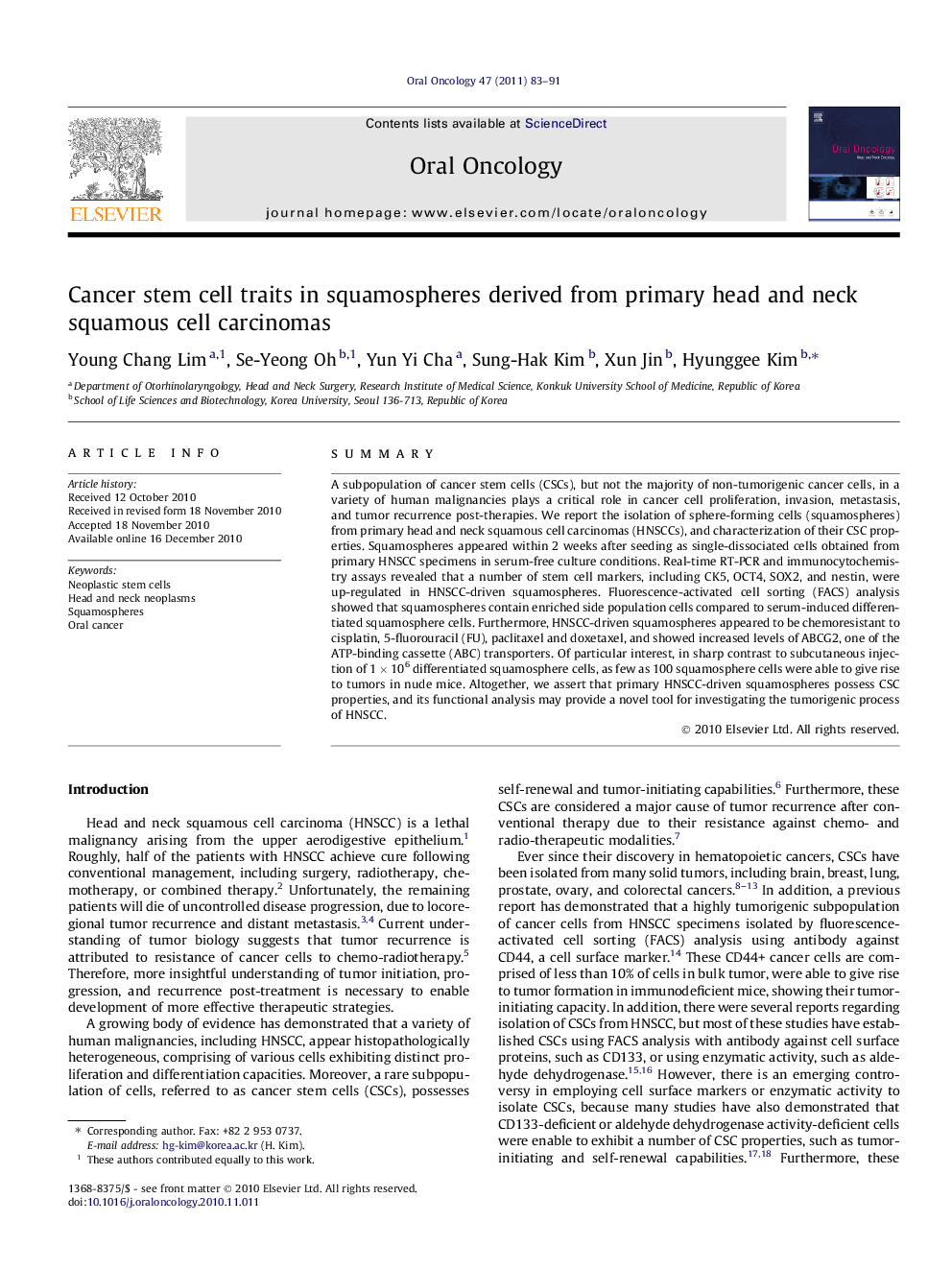| Article ID | Journal | Published Year | Pages | File Type |
|---|---|---|---|---|
| 6055382 | Oral Oncology | 2011 | 9 Pages |
Abstract
A subpopulation of cancer stem cells (CSCs), but not the majority of non-tumorigenic cancer cells, in a variety of human malignancies plays a critical role in cancer cell proliferation, invasion, metastasis, and tumor recurrence post-therapies. We report the isolation of sphere-forming cells (squamospheres) from primary head and neck squamous cell carcinomas (HNSCCs), and characterization of their CSC properties. Squamospheres appeared within 2 weeks after seeding as single-dissociated cells obtained from primary HNSCC specimens in serum-free culture conditions. Real-time RT-PCR and immunocytochemistry assays revealed that a number of stem cell markers, including CK5, OCT4, SOX2, and nestin, were up-regulated in HNSCC-driven squamospheres. Fluorescence-activated cell sorting (FACS) analysis showed that squamospheres contain enriched side population cells compared to serum-induced differentiated squamosphere cells. Furthermore, HNSCC-driven squamospheres appeared to be chemoresistant to cisplatin, 5-fluorouracil (FU), paclitaxel and doxetaxel, and showed increased levels of ABCG2, one of the ATP-binding cassette (ABC) transporters. Of particular interest, in sharp contrast to subcutaneous injection of 1Â ÃÂ 106 differentiated squamosphere cells, as few as 100 squamosphere cells were able to give rise to tumors in nude mice. Altogether, we assert that primary HNSCC-driven squamospheres possess CSC properties, and its functional analysis may provide a novel tool for investigating the tumorigenic process of HNSCC.
Related Topics
Health Sciences
Medicine and Dentistry
Dentistry, Oral Surgery and Medicine
Authors
Young Chang Lim, Se-Yeong Oh, Yun Yi Cha, Sung-Hak Kim, Xun Jin, Hyunggee Kim,
